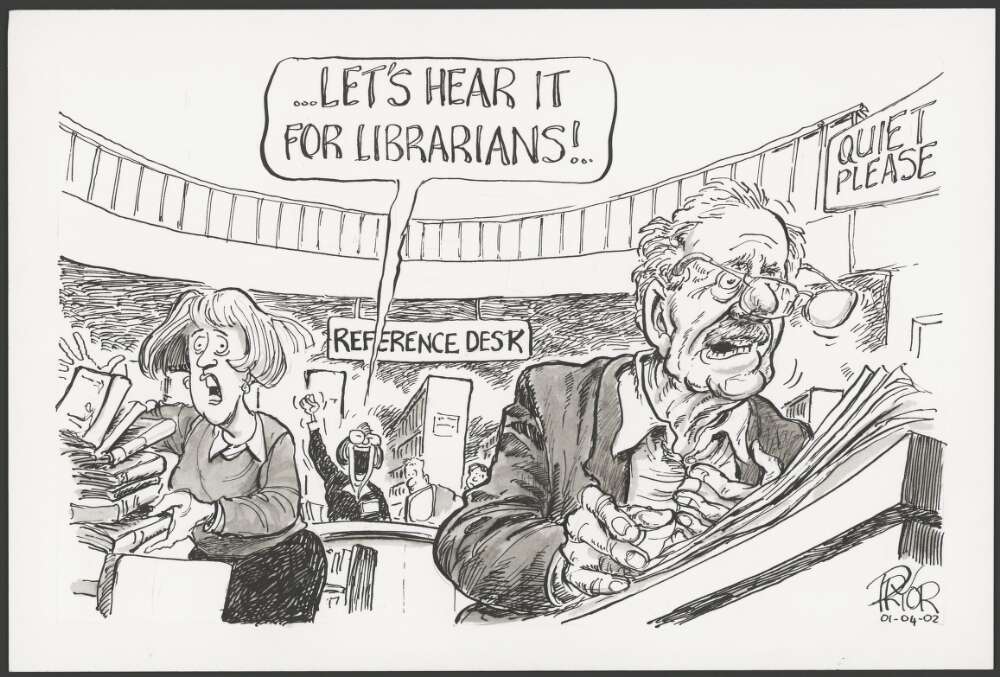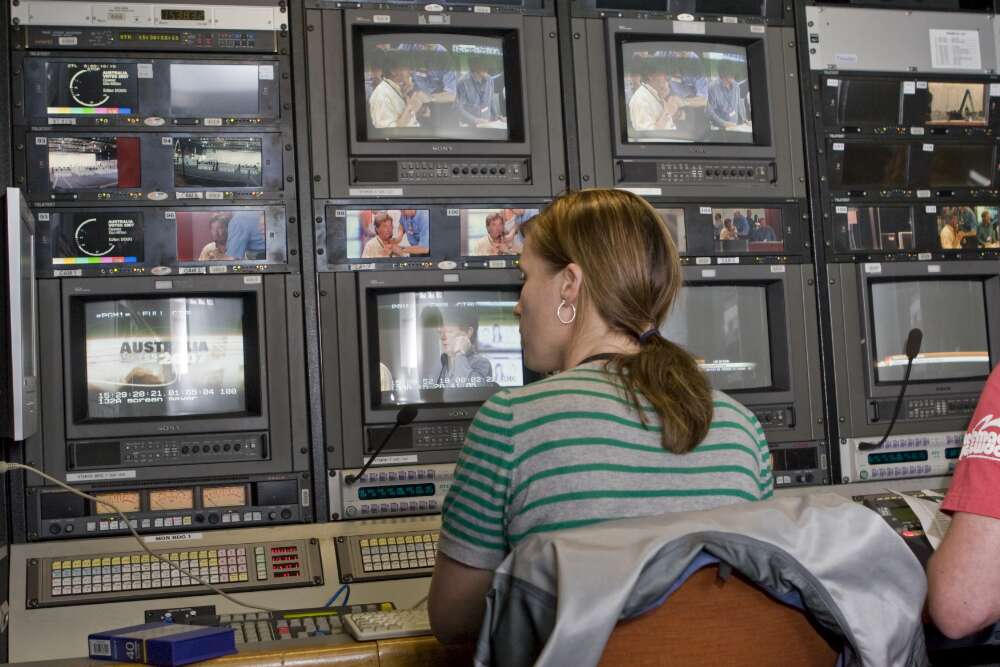Libraries and librarians have always had the role of providing access to information and helping people to navigate complex landscapes to ‘find things out’.
This has never been more important than in our digital age where the challenge is no longer a lack of information, but in discerning its quality.
Gone are the days where conspiracy theories had to be sought out deliberately, and while the ideas they describe are very old, the prevalence of concepts such as ‘fake news’ and ‘alternative facts’, mean that libraries and the services they provide are vital. Indeed they can be seen as fundamental to the operation of democratic society.

Geoff Pryor, Let's hear it for librarians! A reference desk librarian shouting in an area with a "Quiet Please" sign, 2002, nla.cat-vn5179170
As an educator at the National Library of Australia, my work aims to empower young people to access information and use it effectively for their purposes. In many ways this comes down to promoting literacy.
Basic literacy (the ability to read and write, or as defined by the Australian Curriculum – ‘using language to learn and communicate’) is of course essential, but the literacies that build on this – information, media, civil, digital, visual, historical, take us further. These are the true ‘21st Century Skills’ that will enable today’s students to create new knowledge and make meaning in their world.
Research skills are life skills, and the ability to effectively identify misinformation and disinformation online is just one clear expression of this.
 Mark Arundel, Monitors in the ABC TV outside broadcast van for the Australian Federal Elections, Canberra, 23 November 2007, nla.cat-vn4670843
Mark Arundel, Monitors in the ABC TV outside broadcast van for the Australian Federal Elections, Canberra, 23 November 2007, nla.cat-vn4670843
Teachers of course know the value of critical thinking and research skills and embed them into their classroom practice at every opportunity.
Below is a collection of National Library content that can support these discussions, learning activities, and shared challenges. Only some of these resources are designed specifically for teachers and students, but all have real educational value.
YouTube - Secondary Students: Using Online Resources
A good place to start. The National Library’s collection represents the largest source of information in the world about Australia and its people. This video demonstrates how students can access much of it online.
Digital Classroom
The Library’s Digital Classroom is a free collection of online learning resources aligned to the Australian Curriculum. Supporting a variety of classroom contexts and learning styles it adopts an inquiry approach, allowing students to analyse sources, develop skills and draw their own conclusions about the Australian story.
Truth, Evidence, Facts
This event held at the Library last year featured Dr Laura Millar. Dr Millar is independent consultant and scholar in records, archives, and information management. In her presentation she discusses her book and its themes including: ‘What is Truth?’, the types of evidence and their value, and how preserving our memories can support the creation of narratives to share ideas about ourselves.
Media Literacy Basics: Bias & Agenda
This event was held at the Library in 2018 in partnership with the Embassy of the United States of America in Canberra. It featured Michelle Ciulla Lipkin, the Executive Director of the National Association for Media Literacy Education in the United States, and Gavin Sundwall, Counselor for Public Affairs at the U.S. Embassy.
Lipkin discusses how media consumption affected her life in a very personal way, and offers thoughts on how to decode media information. Look out for the section in the Q&A towards the end where the discussion turns specifically to young people and students, exploring concepts of purpose, bias, authorship and message.
Source Analysis – ‘From The Horse’s Mouth’, and ‘Desperately Seeking Secondary Sources’
History teachers in particular are experts in getting students to think about sources. Most of the techniques and skills learned through the process of historical source analysis carry over well to thinking critically about contemporary information. This two part series of blog posts applies the discovery and use of primary and secondary sources to the context of the National Library’s collection.
Have a question about teaching Information or Media Literacy? Get in touch!
We are here to help. Our educators are not the experts on your teaching methods or your students, but they do have a very good handle on what’s in the Library’s collection, how to find and access it, and how it connects with the curriculum.
Ask us your question on social media (Twitter or Instagram DM, or message us through our Facebook page).